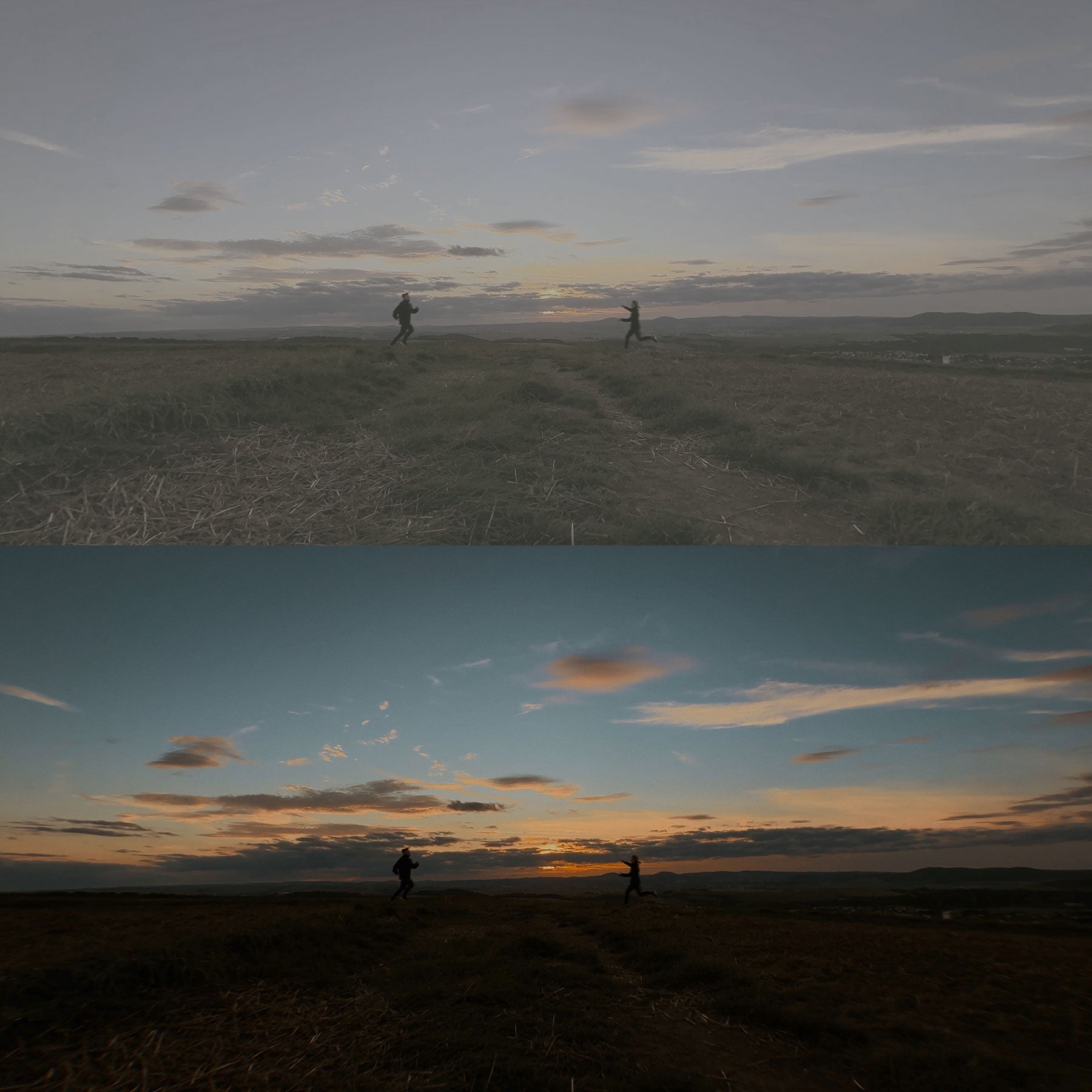Outline
- Understanding Your Value
- Factors That Affect Pricing
- Setting a Base Rate
- Variable Pricing Strategies
- Effective Communication with Clients
Hey there! Are you a freelance videographer looking to take your business to the next level? Well, you’ve come to the right place! Determining your videography rates can be a daunting task, but fear not, because I’m here to guide you through the process. In this ultimate freelancer’s guide, I’ll share all the tips, tricks, and strategies you need to confidently set your prices and attract clients who value your skills.
As a freelancer myself, I understand the struggles that come with figuring out the perfect pricing structure. It’s not just about charging what you think is fair; it’s about finding a balance that allows you to earn a profit while still being competitive in the market. That’s why I’ve compiled this comprehensive guide that covers everything from understanding your worth to negotiating with clients.
I also created a FREE Mini-Guide PDF for Freelancers who want to dive into price calculation and budgeting (Includes example calculations and a ChatGPT Prompt that helps you budget your projects in minutes).
Download it here for free!
When it comes to videography pricing, there’s no one-size-fits-all approach. Every freelancer’s journey is unique, and so is their pricing. That’s why this guide will empower you to make informed decisions based on your individual circumstances and goals. Whether you’re just starting out or you’ve been in the industry for years, this guide will provide you with the tools and knowledge you need to navigate the world of videography rates with confidence.
So, what can you expect from this guide? Firstly, I’ll walk you through the process of evaluating your skills and experience. Understanding your value as a videographer is crucial in determining your rates, and I’ll help you identify your strengths and weaknesses. From there, I’ll show you how to assess the demand for your services in the market and do competitive research to set realistic prices.

But it doesn’t stop there.
I’ll delve into different pricing strategies, such as day rates, hourly rates, and project-based rates, so you can choose a model that aligns with your business objectives. Additionally, I’ll share my top tips for pricing add-ons and extras, so you can boost your income and offer your clients exceptional value.
But what about negotiation? It’s a topic that can often make freelancers feel uncomfortable, but it’s an essential skill to master if you want to thrive in the industry. I’ll guide you through the art of negotiation, equipping you with the techniques and strategies to confidently discuss rates with clients and reach a mutually beneficial agreement.
Of course, pricing is just one piece of the puzzle. I’ll also cover the importance of clear and detailed contracts, managing client expectations, and providing exceptional customer service. These elements are crucial for building long-lasting relationships with your clients and establishing a solid reputation in the industry.
Are you ready to take control of your videography business and set rates that truly reflect your value? Let’s dive into this ultimate freelancer’s guide together and unlock the secrets to successful videography pricing. Get ready to level up your skills, attract high-quality clients, and achieve the financial freedom you deserve as a talented freelance videographer. It’s time to turn your passion into profit!
Understanding Your Value
Determining your rates as a videographer goes beyond simply calculating your time and expenses. It’s essential to understand your value as a freelancer and be confident in the expertise and quality you bring to your clients. Here are some key points to consider when evaluating your value:
Expertise and Skill Set
As a videographer, it’s important to recognize your expertise and the skills you bring to the table. Whether you specialize in wedding videos, corporate documentaries, or promotional content, your knowledge and experience in your field add value to your services. Consider the time and effort you have invested in honing your craft, staying up-to-date with industry trends and techniques, and mastering the art of storytelling through visuals. Acknowledging your expertise can help you justify charging a premium for your work.
Unique Perspectives and Creativity
Clients hire videographers not just for technical skills, but also for their unique perspectives and creative vision. Your ability to capture moments in a visually compelling way, compose shots effectively, and tell captivating stories is what sets you apart. Your creativity and artistic approach provide value to clients who trust you to bring their vision to life. Highlight your ability to think outside the box and offer creative solutions to make your clients’ videos stand out.
Quality Equipment and Resources
Investing in high-quality equipment and resources demonstrates your commitment to delivering top-notch videography services. Clients expect professional-grade gear that can produce high-resolution videos with crystal-clear audio. Your equipment arsenal, including cameras, lenses, lighting equipment, and editing software, contributes to the overall quality of your work. Be sure to emphasize the value of using cutting-edge tools that enhance the final product and give your clients confidence in the results you can deliver.
Time and Efficiency
Time is a valuable resource for both you and your clients. Your efficiency in capturing footage, editing, and delivering the final product can significantly impact your value. Clients appreciate videographers who respect deadlines and can deliver polished videos within the agreed-upon timeframe. Efficient project management ensures that your clients’ expectations are met, which can further justify your rates and build trust in your services.
Client Satisfaction and Relationships
Lastly, your ability to provide exceptional customer service and build strong client relationships adds value to your freelance videography business. Taking the time to understand your clients’ needs, communicating effectively, and going the extra mile to exceed expectations can set you apart from the competition. Happy clients are more likely to provide positive referrals and become repeat customers, which can lead to a steady stream of work and growth for your business.
Understanding your value as a videographer is crucial in determining your rates and establishing a strong freelance business. By recognizing and emphasizing your expertise, creativity, quality equipment, efficiency, and ability to provide excellent customer service, you can confidently set your rates accordingly and attract clients who appreciate the value you bring to their video projects.

Factors That Affect Pricing
Determining your videography rates should not be a random process. It requires careful consideration of various factors that can significantly impact the pricing structure of your services. Here are some key factors to keep in mind when setting your rates as a freelancer:
1. Experience and Expertise
As a videographer, your level of experience and expertise plays a pivotal role in determining your pricing. Clients often seek out professionals who have a proven track record and a strong portfolio. If you have years of experience and an impressive body of work, you can justify charging higher rates. On the other hand, if you’re just starting out or have limited experience, it may be necessary to offer more competitive pricing to attract clients and build your portfolio.
2. Time and Effort
The amount of time and effort required to complete a videography project significantly affects pricing. Consider how complex the project is, the shooting duration, equipment setup time, post-production editing, and any additional services such as color grading or special effects. Projects that demand extensive time and effort should reflect in higher rates due to the level of commitment and meticulousness required.
3. Equipment and Resources
Investing in high-quality videography equipment and resources can be costly, and these expenses should be considered when determining your rates. Top-notch cameras, lenses, lighting equipment, microphones, and editing software all contribute to delivering exceptional video content. The depreciation and maintenance costs of these assets should be proportionally reflected in your pricing to ensure profitability.
4. Market Demand and Competition
Understanding the market demand and competitiveness of the videography industry in your area is crucial for setting your rates. Research and analyze what other freelancers are charging for similar services in your niche to benchmark your pricing. Keep in mind that if you offer specialized services or have a unique style, you may be able to charge a premium. However, if the market is highly saturated with videographers, consider offering competitive rates to stand out from the competition.
5. Client’s Budget and Expectations
Each client comes with their own budget limitations and expectations. It’s essential to understand your client’s requirements and align your pricing accordingly. While some clients may have a higher budget and are willing to pay a premium for quality, others may be more price-sensitive. Flexibility in your pricing structure can help you cater to a wider range of clients and increase your chances of securing projects.
6. Additional Services and Deliverables
Additional services and deliverables beyond the primary videography project can also impact pricing. Clients may require extra services like drone footage, audio recording, scriptwriting, or motion graphics. These add-ons contribute to the overall time and effort required to complete the project, and should be factored into the pricing structure. Clearly outline the cost of these additional services to ensure transparency with your clients.
7. Geographic Location
Geographic location can influence pricing due to variations in the cost of living and market demand. For example, freelancers based in big cities where the cost of living is higher may need to charge higher rates to cover their expenses. Conversely, videographers in less competitive or rural areas may need to adjust their rates to attract clients and remain competitive.
Understanding these factors and evaluating their impact on your pricing will help you set reasonable rates that reflect your expertise, effort, and the value you bring to your clients. Remember to continually reassess and adjust your rates as you gain experience and the market evolves to ensure you can sustain a profitable freelance videography business.

Setting a Base Rate
Determining your base rate is an essential step in establishing your videography pricing. It serves as the foundation upon which you can build your quotes and negotiate with clients. Here are some key factors to consider when setting your base rate:
1. Calculate Your Costs
Firstly, it is crucial to calculate your costs accurately. This includes not only the equipment you use, but also any software subscriptions, insurance, marketing expenses, and other overhead costs. Take the time to evaluate all your expenses and ensure they are covered by your base rate. By understanding your costs, you can avoid undercharging for your services.
2. Consider Your Experience and Expertise
Your experience and expertise play a significant role in determining the appropriate base rate. As you gain more experience and develop specialized skills in videography, you can justify charging higher rates. Clients often value the expertise and reliability that comes with experience, so don’t hesitate to factor it into your pricing strategy.
3. Assess the Local Market
Next, assess the videography market in your local area. Research what other videographers are charging for similar services and take note of any competitive advantages or unique selling points you offer. While you don’t want to undercut your competitors, you also don’t want to overprice yourself. Aim for a rate that reflects your skills and positions you competitively within the market.
4. Consider the Project Scope
When setting a base rate, take into account the scope of the project. Is it a simple, straightforward shoot, or does it involve complex editing and post-production work? Consider the time, effort, and resources required for each project and adjust your base rate accordingly. Remember to be transparent with your clients about any additional costs that may arise based on the project’s complexity.
5. Factor in Time and Availability
Consider the amount of time you can dedicate to each project and factor that into your base rate. If you have a busy schedule or need to allocate extra time for certain projects, it may be appropriate to charge a higher rate. Your availability and the level of demand for your services will influence the value you offer, so be sure to account for that when setting your rates.
6. Evaluate Client Budgets
Lastly, consider your target clients’ budgets. Understanding what clients are willing to pay for videography services in your market will help you determine a suitable base rate. While it’s essential to value your skills and time, it’s equally important to remain realistic and flexible to accommodate different client budgets. Assessing your target market’s spending capacity can guide you in setting a competitive base rate.
By considering these factors and setting a solid base rate, you can ensure that your videography pricing is fair, profitable, and reflects the value you provide to clients. Remember, it’s not just about the numbers; it’s about establishing a rate that aligns with your skills, experience, and the local market.

Variable Pricing Strategies
When it comes to pricing your videography services, it’s important to consider the various factors that can influence your rates. Adopting a variable pricing strategy allows you to adjust your prices based on different elements that may differ from project to project. This not only ensures that you are properly compensated for your time and expertise but also reflects the value you bring to each unique project. Here are some variable pricing strategies to consider:
- Project Complexity:
The complexity of a project can have a significant impact on your pricing. More complex projects, such as multi-day shoots or those requiring specialized equipment or techniques, may require more time and resources. As a result, you can justify charging a higher rate for these types of projects.
- Timeframe:
The timeframe for completing a project can also influence your pricing. A tight deadline might require you to work longer hours or put additional resources into the project. In these cases, it’s reasonable to charge a premium to compensate for the extra effort and ensure you meet the client’s expectations.
- Deliverables:
The type and number of deliverables you provide can also affect your pricing. For instance, if a client requires additional edits, color grading, or motion graphics, it’s reasonable to charge a higher rate. Having a clear understanding of the client’s expectations and the specific deliverables they desire will help you determine the appropriate pricing for your services.
- Client Budget:
Consideration of the client’s budget is essential for establishing a fair pricing structure. While it’s important to value your skills and time, it’s equally crucial to align your rates with what the client can afford. Understanding the client’s budget limitations can help you tailor your pricing strategy and negotiate effectively.
- Experience and Expertise:
Your level of experience and expertise play a significant role in determining your rates. As you gain more experience and develop a unique style, you are likely to attract clients who value your skills and are willing to pay a premium for your services. Adjusting your rates accordingly is a reflection of your growing professionalism and proficiency in the field.
Remember, the key to implementing variable pricing strategies is to strike a balance between fair compensation for your work and keeping your rates competitive within the industry. By understanding the unique factors that influence your pricing, you can confidently determine the value of your videography services for each project.

Effective Communication with Clients
When it comes to freelancing as a videographer, one of the most important skills you need to master is effective communication with your clients. Clear and open communication is the foundation of any successful project, as it ensures that both parties are on the same page and working towards a common goal. Here are some tips to help you enhance your communication skills and foster better client relationships.
Listen actively: Before diving into a project, take the time to listen attentively to your client. Understand their vision, requirements, and expectations for the video. Ask questions to clarify any doubts and make sure you fully grasp what they want. Actively listening shows your clients that you value their input and are committed to delivering a product that meets their needs.
Set clear expectations: Clearly outline the scope of your work, including timelines, deliverables, and costs. This helps manage your clients’ expectations and avoids any confusion down the line. Be transparent about what you can and cannot deliver within their budget and explain any potential limitations or challenges that may arise.
Be responsive and timely: Promptly respond to your clients’ emails, calls, or messages. Being proactive in your communication shows that you are reliable, attentive, and committed to providing excellent service. If there are any delays or changes in the project timeline, inform your client immediately and discuss alternative solutions.
Use simple language: Avoid using technical jargon or complex terminology while communicating with your clients. Explain concepts in a clear and understandable manner, ensuring that they can easily follow your discussions. This helps build trust and allows your clients to feel comfortable expressing their ideas or concerns without fear of not understanding the technicalities.
Provide regular updates: Keep your clients informed about the progress of the project through regular updates. This could include sharing work-in-progress drafts, discussing any challenges you encountered, or seeking approval for specific elements. Regular updates reassure your clients that their project is moving forward and allows them to provide feedback or make adjustments as necessary.
Be flexible and open to feedback: Remember that you are collaborating with your clients to bring their vision to life. Be open to their suggestions and feedback, even if it means making changes to your initial plan. Embrace constructive criticism as an opportunity for growth and improvement. By being flexible and accommodating, you not only deliver a better end product but also strengthen your client relationships.
Document all communications: It is crucial to track and document all communications with your clients. This includes project specifications, agreements, change requests, and any other relevant discussions. Having a written record helps avoid misunderstandings and provides a point of reference for both parties in case any disputes arise.

Effective communication is key to establishing trust, building strong client relationships, and ensuring successful collaborations. By actively listening, setting clear expectations, being responsive, using simple language, providing regular updates, and being open to feedback, you can become a skilled communicator and deliver exceptional results that exceed your clients’ expectations.














Leave a comment
All comments are moderated before being published.
This site is protected by hCaptcha and the hCaptcha Privacy Policy and Terms of Service apply.